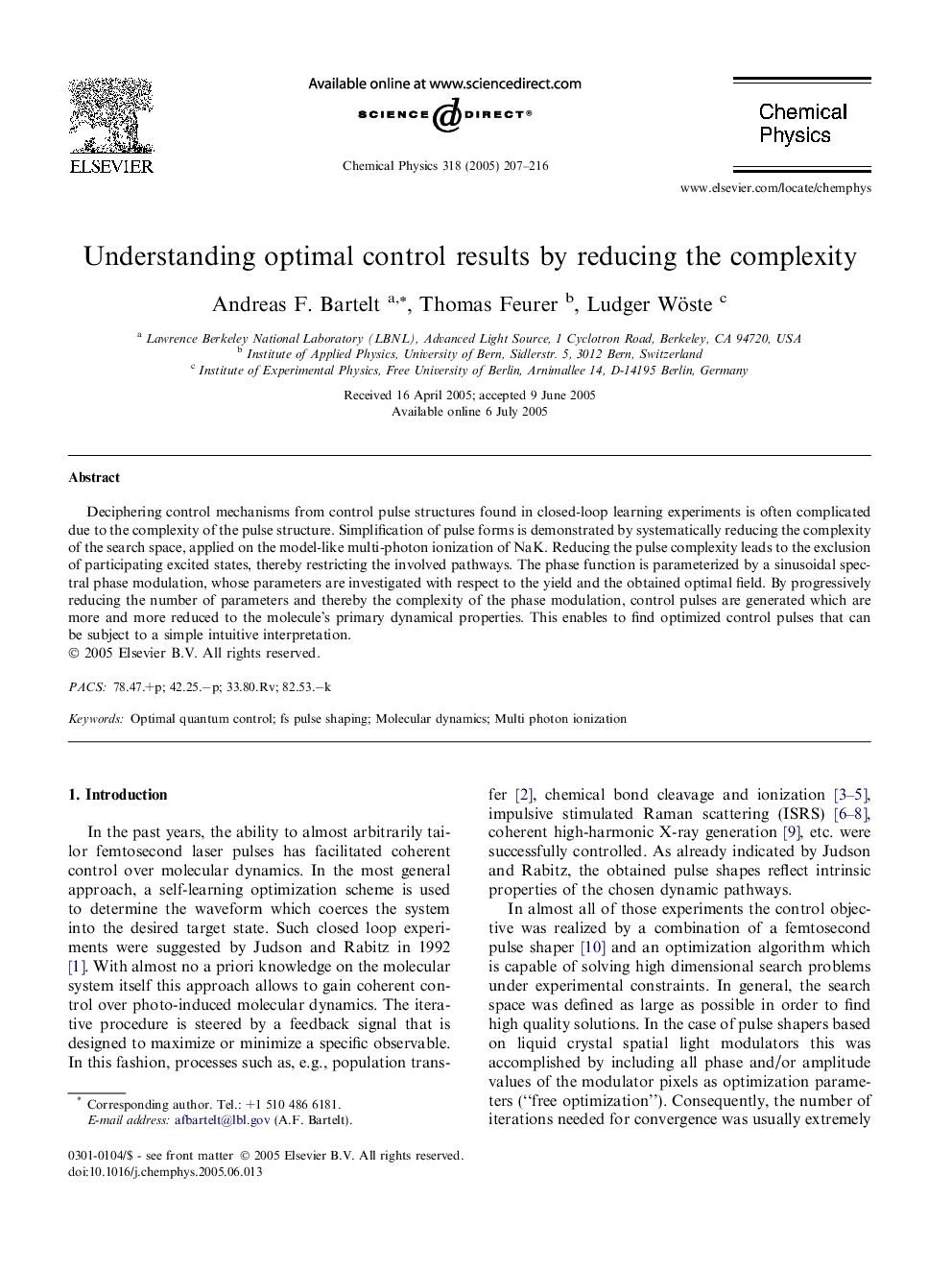| Article ID | Journal | Published Year | Pages | File Type |
|---|---|---|---|---|
| 9575249 | Chemical Physics | 2005 | 10 Pages |
Abstract
Deciphering control mechanisms from control pulse structures found in closed-loop learning experiments is often complicated due to the complexity of the pulse structure. Simplification of pulse forms is demonstrated by systematically reducing the complexity of the search space, applied on the model-like multi-photon ionization of NaK. Reducing the pulse complexity leads to the exclusion of participating excited states, thereby restricting the involved pathways. The phase function is parameterized by a sinusoidal spectral phase modulation, whose parameters are investigated with respect to the yield and the obtained optimal field. By progressively reducing the number of parameters and thereby the complexity of the phase modulation, control pulses are generated which are more and more reduced to the molecule's primary dynamical properties. This enables to find optimized control pulses that can be subject to a simple intuitive interpretation.
Related Topics
Physical Sciences and Engineering
Chemistry
Physical and Theoretical Chemistry
Authors
Andreas F. Bartelt, Thomas Feurer, Ludger Wöste,
